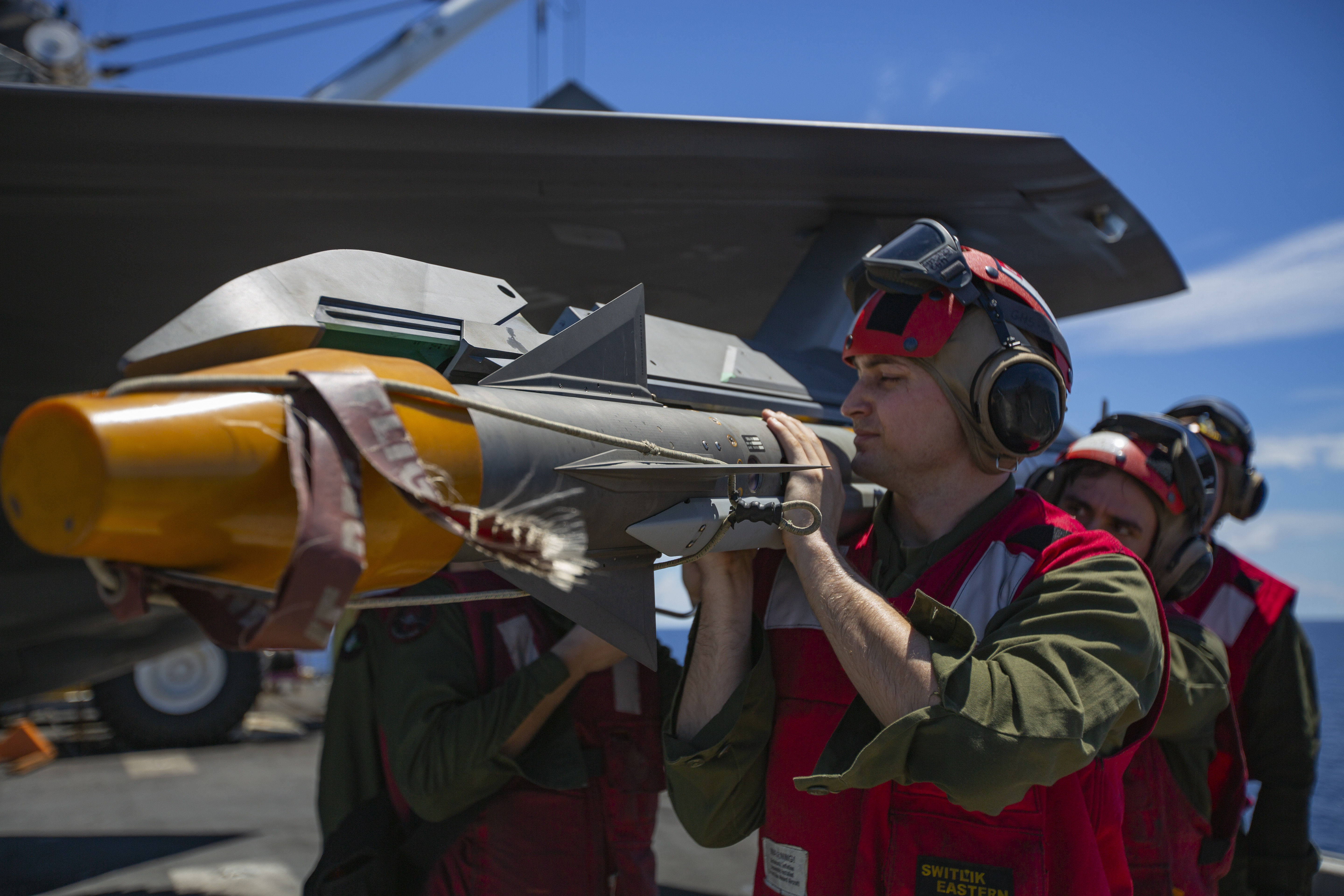Hello Everyone, It’s Time To Talk About The:
“AIM-9X Sidewinder Block ii Missile”
Description:
The mission of the AIM-9X is to detect, acquire, intercept, and destroy a wide range of high-performance and ever-evolving airborne threats. The AIM-9X Block II/II+ Sidewinder (AIM-9X Blk II/II+) continues the evolution of the AIM-9 series of missiles. This missile program delivers a datalink-enabled, launch and leave, air combat munition that uses passive Infrared (IR) energy to acquire and track enemy air targets. Fighter aircraft first shot, first kill opportunities when conducting air combat maneuvering Within Visual Range (WVR) are essential for aircrew survival. The AIM-9X provides these opportunities with unmatched offensive and defensive capabilities against threats WVR, even when IR countermeasures are employed. The AIM-9X also provides limited short-range capability in the Beyond Visual Range (BVR) air-to-air battle.

Features:
The AIM-9X Block II/II+ Sidewinder (AIM-9X Blk II/II+) continues the evolution of the AIM-9 series of missiles. This missile program delivers a launch and leave, air combat munition that uses passive Infrared (IR) energy to acquire and track enemy air targets and complements the radar guided Advanced Medium Range Air-to-Air Missile (AMRAAM). F/A-18 first shot, first kill opportunities while conducting air combat maneuvering Within Visual Range (WVR) are essential for aircrew survival. The AIM-9X provides these opportunities with unmatched offensive and defensive capabilities against threats WVR, even when IR countermeasures are employed. The AIM-9X also provides limited short-range capability in the Beyond Visual Range (BVR) air-to-air battle. Anti-tamper features have been incorporated to protect improvements inherent in this design.
Background
A prototype of the Sidewinder, the AIM-9A, was first fired successfully in September 1953. The initial production version, designated AIM-9B, entered operational use in 1956 and has been improved upon steadily since. The L model was the first Sidewinder with the ability to attack from all angles, including head-on. The AIM-9M has the all-aspect capability of the L model while providing all-around higher performance. The AIM-9M has improved defense against infrared countermeasures, enhanced background discrimination capability, and a reduced-smoke rocket motor. These modifications increase its ability to locate and lock on a target and decrease the missile’s chances for detection. Deliveries began in 1983. The AIM-9M-7 was a specific modification to AIM-9M in response to threats expected in the Persian Gulf war zone. The AIM-9X Block I reached initial operational capability in late 2003 and was approved for full-rate production in May 2004. AIM-9X Block I added full day/night employment, resistance to countermeasures, extremely high off-boresight acquisition and launch envelopes, greatly enhanced maneuverability, and improved target acquisition ranges. The AIM-9X Block II, introduced in 2011, added a datalink, fuse enhancements, and an ISD – ignition safety device. Further software advances have increased resistance to IR countermeasures and added a surface attack capability. The most recent hardware variant, the AIM-9X Block II+, began production in 2019 and has a reduced Radar Cross Section. The Sidewinder has been integrated onto all U.S. fighter aircraft, and is currently in use by more than 40 nations throughout the world. The AIM-9 is one of the oldest, least expensive, and most successful missiles in the U.S. weapons inventory.
Service: U.S. Navy and U.S. Air Force
General Characteristics
Primary Function: Air-to-air missile
Contractor: Raytheon Missile Systems, Tucson, Arizona
Date Deployed: 1956
Propulsion: Solid-propellant rocket
Length: 9.9 feet
Diameter: 5 inches (.13 meters)
Wingspan: 17.6 inches (0.45 m)
Weight: 186 pounds (84 kg)
Speed: Mach 2.5 (3,087 km)
Range: 22 miles (35.4 km)
Guidance System: (IR)
Warhead: Annular blast fragmentation (conventional) weighing 20.8 pounds (9.36 kg)***